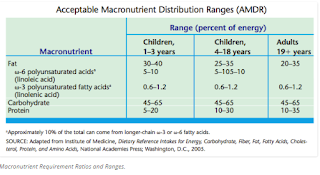Defining
the Problem...
There are many reasons why we make the
food choices that we do. Reasons may
range from physical factors such as hunger to psychological factors of
boredom. Whatever the reason a person
chooses the food they eat, they should be cognizant of the nutritional value of
the food and consequences if under or over-indulged. Nutrition management is important in order to
ensure our bodies receive the required nutrients to function properly. It also helps with reducing health risk and maintaining
a healthy weight, which ensures not becoming underweight, overweight, or obese. Underweight is defined as having a “body
weight below a healthy weight; BMI below 18.5.”
Overweight is defined as having a “body weight above a healthy weight;
BMI 25 to 29.9.” Obesity is as having a
“body mass index of 30 or higher” (Sizer and Whitney, 2013, pg. 335).
Past
vs. Present…
In the United States, today, an estimated
68 percent of adults are overweight or obese compared to the 1960’s, where only
about 13 percent fell in this category
(Sizer & Whitney, 2013).
This is a problem for all ages.
On the other spectrum, underweight only
affects about 2 percent of adults in America.
However, being underweight poses health threats to those who drop below
a healthy minimum
(Sizer &
Whitney, 2013, p. 336).
People at either
extreme of body weight face increased risks
(Sizer & Whitney, 2013, p. 336).
Prevention…
There are a variety of different causes the
may be associated with underweight, overweight, or obesity.
Some of the reasons for being underweight may be
due to genetics, eating disorder, illness, stress, depression, and many other reasons.
Ironically, some of these same causes for
being underweight can lead to being overweight or obese.
However, just as healthy weight loss requires a
balanced approach, healthy weight gain also requires the same approach
("FamilyDoctor," 2011).
Here are some ways to prevent from becoming
underweight:
·
Increase calorie intake by adding healthy
calories
·
Focus on eating foods that are rich in
nutrients, such as high protein meats to build muscle
("FamilyDoctor," 2011)
·
Eat snacks that have plenty of protein and
carbohydrates
Being underweight may indicate an
underlying health issue, so make sure to consult a doctor prior to beginning a
weight gain program.
If a problem does exist,
diet changes may not correct the issue
("FamilyDoctor," 2011, p. 1).
To prevent from becoming overweight or
obese, following a healthy lifestyle can help
("NIH," 2012).
Many lifestyle changes begin as a child
("NIH," 2012).
Embedding a healthy lifestyle and encouraging
physical activity in children helps develop long-term habits that may prevent them
from becoming overweight or obese when they become adults.
In addition, focusing on portion control can help
prevent from becoming overweight or obese.
Being physically active is another recommendation to mitigate risk.
Proper nutrition and being physically active is
critical to maintaining a healthy weight and lifestyle.
Most American’s live a sedentary lifestyle,
which is a major contributor to obesity.
Engaging in some sort of physical activity will help reduce health risk
associated with obesity and being overweight.
Reference
Healthy Ways to Gain Weight If
You’re Underweight. (2011). Retrieved from
http://familydoctor.org/familydoctor/en/prevention-wellness/food-nutrition/healthy-food-choices/healthy-ways-to-gain-weight-if-youre-underweight.html
How Can Overweight and Obesity
Be Prevented? (2012). Retrieved from http://www.nhlbi.nih.gov/health/health-topics/topics/obe/prevention
Sizer, F. S., & Whitney,
E. (2013). Nutrition concepts &
controversies (13th ed.). [Vitalsource Bookshelf version]. Retrieved from
http://online.vitalsource.com/#/books/9781285785981/pages/269964551














